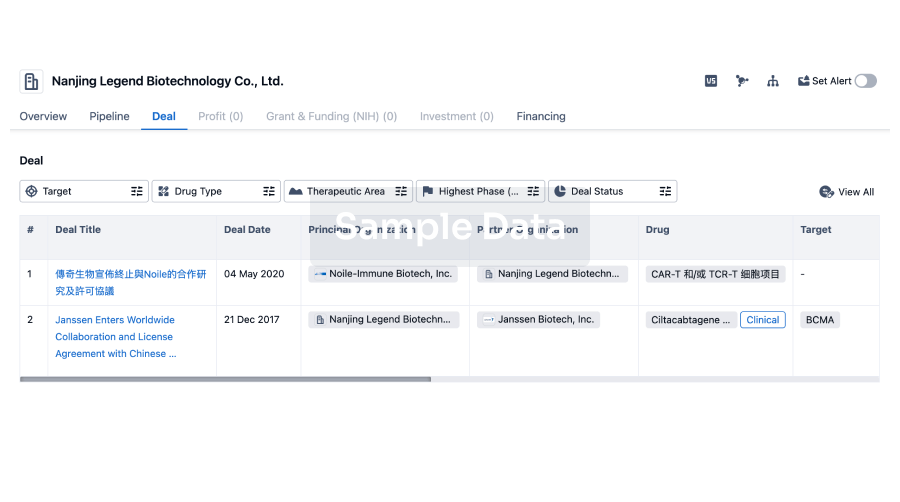Request Demo
Last update 08 May 2025

Boots UK Ltd.
Last update 08 May 2025
Overview
Related
1
Drugs associated with Boots UK Ltd.Target- |
Mechanism- |
Active Org.- |
Originator Org. |
Active Indication- |
Inactive Indication |
Drug Highest PhaseWithdrawn |
First Approval Ctry. / Loc. United States |
First Approval Date30 Dec 1992 |
100 Clinical Results associated with Boots UK Ltd.
Login to view more data
0 Patents (Medical) associated with Boots UK Ltd.
Login to view more data
28
Literatures (Medical) associated with Boots UK Ltd.08 Nov 2024·International Journal of Pharmacy Practice
Development of a pharmacy research career pathway discussion tool
Author: Ireland, M ; Hiom, S J ; Jayham, A
01 Aug 2021·BMJ OpenQ4 · MEDICINE
Reducing risks associated with medicines and lifestyle in a residential care population with intellectual disabilities: evaluation of a pharmacy review initiative in England
Q4 · MEDICINE
ArticleOA
Author: Kullu, Rajni ; Kenzie, Stephanie ; White, Simon ; Jones, Wesley ; Islam, Jasmeen ; Thayer, Nick
26 Mar 2021·International Journal of Pharmacy Practice
Evaluation of a collaborative pharmacy service initiative for people with intellectual disabilities in residential care homes
Author: Islam, J ; White, S ; Kullu, R ; Thayer, N ; Jones, W ; Kenzie, S
100 Deals associated with Boots UK Ltd.
Login to view more data
100 Translational Medicine associated with Boots UK Ltd.
Login to view more data
Corporation Tree
Boost your research with our corporation tree data.
login
or

Pipeline
Pipeline Snapshot as of 19 Dec 2025
The statistics for drugs in the Pipeline is the current organization and its subsidiaries are counted as organizations,Early Phase 1 is incorporated into Phase 1, Phase 1/2 is incorporated into phase 2, and phase 2/3 is incorporated into phase 3
Other
1
Login to view more data
Current Projects
| Drug(Targets) | Indications | Global Highest Phase |
|---|---|---|
Flosequinan | Heart Failure More | Withdrawn |
Login to view more data
Deal
Boost your decision using our deal data.
login
or

Translational Medicine
Boost your research with our translational medicine data.
login
or

Profit
Explore the financial positions of over 360K organizations with Synapse.
login
or

Grant & Funding(NIH)
Access more than 2 million grant and funding information to elevate your research journey.
login
or

Investment
Gain insights on the latest company investments from start-ups to established corporations.
login
or

Financing
Unearth financing trends to validate and advance investment opportunities.
login
or

AI Agents Built for Biopharma Breakthroughs
Accelerate discovery. Empower decisions. Transform outcomes.
Get started for free today!
Accelerate Strategic R&D decision making with Synapse, PatSnap’s AI-powered Connected Innovation Intelligence Platform Built for Life Sciences Professionals.
Start your data trial now!
Synapse data is also accessible to external entities via APIs or data packages. Empower better decisions with the latest in pharmaceutical intelligence.
Bio
Bio Sequences Search & Analysis
Sign up for free
Chemical
Chemical Structures Search & Analysis
Sign up for free